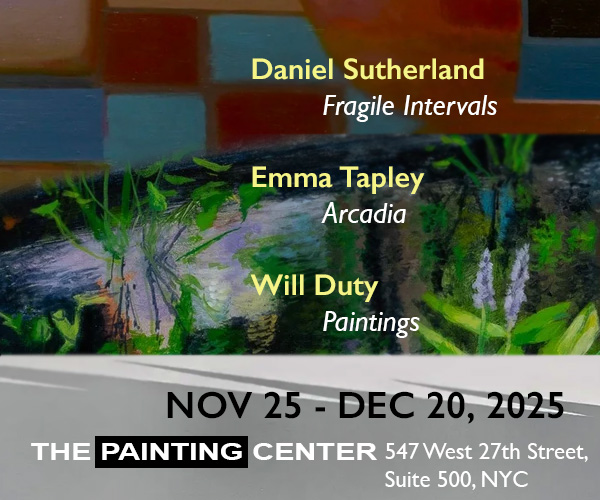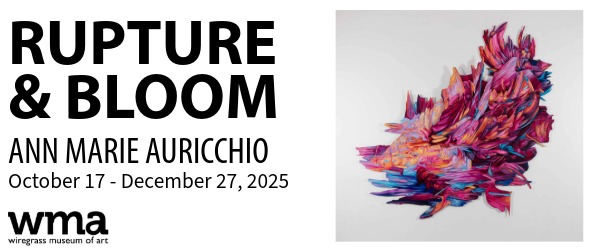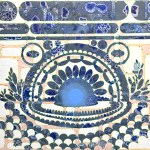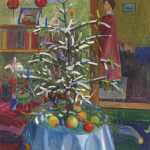
Contributed by Saul Ostrow / “Let the Painting Make You,” the exhibition of Brice Marden’s last paintings at Gagosian Gallery, set me to thinking about the relationship between Marden’s earlier gestural works and Gerhard Richter’s process-oriented abstract paintings, which in turn led me to consider the connection of their works to those of David Reed and then to the French artists Simon Hantaï and Bernard Frize who, like Reed, creates the illusion of an impossible spontaneity. Slowly, I came to focus on the question of why Richter is identified with post-modernism, while Marden and Reed’s works are most often critically identified as being quintessentially modernist and formalist. While Hantai (the modernist?) and Frize (the post-modernist?) fit the question of what constitutes post-modern abstract painting, their references and histories are different. Instead, I decided I would focus on Richter, Reed and Marden, who all seem to transgress the formalist and modernist dictums that were generated in the 1950s and 1960s in the United States and then exported abroad. Hantaï and Frize are part of another genealogy.


Marden, Richter, and Reed intentionally blur the boundaries between spontaneity and control by subversively introducing into their work the simulacrum of spontaneity and process: Reed’s early repetitive brushstrokes are nearly impossible; Marden’s looping bands of color, on close inspection, are anything but spontaneous or intuitive; and Richter’s works are indirectly – mechanically – produced. Like Richter’s work, Reed’s paintings are mediated while Marden’s tend to be made in series built on thematic repetitions with variations. Their works are a response to the intricacies of abstract painting and highlight their audiences’ habit of seeing their expectations rather than what is actually presented to them. To achieve this, each painter devised an aesthetic built on the simulation of authenticity. In this context, one must mention Robert Ryman’s work of the 1960s and 1970s, which occupies an intermediary position in that it is unabashedly procedural, whereas Reed, Marden, and Richter, however fraudulently, seek to preserve the aura of intuition. Though Ryman was originally identified with post-Minimalism, with its erasure he, Richard Serra, and Eva Hesse have come to be re-positioned critically as Minimalists.


I deduced from my reflections that Reed and Marden’s introduction of the spontaneous brushstroke was a sign that must also be thought of in the context of the post-Minimalism of the 1960s–70s. Critically, during this period Marden was transitioning from Minimalist monochrome paintings while Reed along with such artists as David Diao, Harriet Korman. Jack Whitten, and Mary Heilmann was abandoning the quest for authenticity. Many of the painters working at the time with gestural abstraction and process did not push in the direction of post-Minimalism. They instead employed the iconography of the gesture to formal ends, as a way to make an abstract painting that could still claim authenticity though they did not necessarily depend on an assumed emotive content. For instance, Ed Clark, a second generation Abstract Expressionist painter, started to use a push broom to paint oversized brushstrokes on the surfaces of shaped canvases. Unlike Diao and Whitten, who were interested in material processes, Clark sought to sustain Abstract Expressionism’s sense of urgency and action. The British painter Howard Hodgkin also employed oversized brushstrokes to offer a self-conscious commentary on their presentation and placement as self-contained objects. Despite such artifice, Hodgkin’s aesthetic signified sincerity, authenticity, and subjectivity. At about the same time in the late 1970s and ’80s, Jules Olitski took the most extreme approach to addressing the gestural. Abandoning his signature color field spray paintings that were identified with Clement Greenberg’s post-painterly abstraction, he began to make the squeegee pictures using a thick acrylic gel and iridescent spray paint. In these works, Olitski used the gesture to make a physically aggressive surface of baroque swirls. In the 1990s, he would make the nearly kitschy “Mitt” pieces using a painting mitt to move the acrylic gel about, forming visceral and convoluted intestinal configurations. Olitski’s theatricality perhaps comes closest to Reed, Marden, and Richter’s cooler use of the simulacrum of the gestural as a vehicle for exploring how abstract painting’s inauthenticity might be formally exploited.


Richter, a latecomer to abstract painting whose roots are in German Pop Art and photo-realism, in the 1970s began making representations of abstract paintings. The abstract paintings Richter chose to simulate were modeled on the generic process-oriented squeegee paintings that Whitten and Diao had made in the late-1960s and had abandoned by the 1970s. Similarly to Marden and Reed, Richter not only adopted but adapted AbEx and then transformed it into an artifice. Where Richter differed was in preserving the aggressive “maleness” associated with AbEx, while Marden and Reed abandoned that aesthetic for one that may be considered less “all at once” and singular in effect.
In formulating this proposition concerning the inauthenticity of Reed, Marden, and Richter’s works and its mediation, I realized that the approach of this threesome to abstract painting had its roots in Jasper Johns’ influential early practice of creating imagistic representations of painting’s formalist terms. In doing so, he turned the abstract from a mode of expression and pure aestheticism into concepts to be signified – to be represented or depicted rather than merely presented. Johns had thus pulled abstract painting back into the very context it was meant to escape. This imagistic turn, which should logically have marked the beginning of post-modernism, went critically unnoted for about twenty years, mainly because in the 1960–70s, the dominant critical perspectives on abstract painting were formalist and art-historical and not yet structuralist. Johns’s work was seen as a neo-dadaist satire of Greenberg’s formalism and Harold Rosenberg’s vision of Action Painting, rather than advancing a new paradigm. Yet buried in his literalism was a strategy for replacing the real with its representation, which reflected trends in mass media. Johns had made the abstract into a ready-made.

By the late 1960s, Reed, Marden, Diao, Heilmann, Korman, and Whitten had already begun to deconstruct painting’s established forms, reducing them to mere gestures – objectified acts exploiting the look of subjectivity and process. They had learned from Minimalism and Pop that if they highlighted the theatrical nature of abstract painting, they could formally exploit its inherent artificiality. They used simulated brushstrokes and paint’s materiality to draw attention to the physical presence of the artwork, rather than its signification of expressivity or intuition. This resonates with Johns’s literalization of the rhetoric of formalism and AbEx. By the late 1970s, Diao, Whitten, Korman, and Heilmann would diverge in their own idiosyncratic directions. Heilmann and Korman increasingly moved away from employing negative process and gesture, Korman accenting color and eccentric geometry and Heilmann aesthetic sensibility and touch. Meanwhile, Whitten broke away from painterly processes and became ever more interested in his paintings’ materiality. Today, he is best known for his mixed media, mosaic-like abstract paintings. It was Diao who most radically changed his conceptual orientation. Since the 1980s, he has used painting as a format for critically deconstructing the historicity of geometric abstract painting, thus confronting issues of formalism and identity.
The idea of representing abstract painting most obviously begins in the wake of the triumph of Abstract Expressionism. Amid the pastiche and critical failures of AbEx’s second generation, Minimalism and Pop Art were acclaimed for having abandoned its depleted vocabulary of gestural tropes and transcendental aspiration. On the heels of this shift, the artists identified as post-Minimalists took on the project of exploiting AbEx’s dichotomies of spontaneity and control, reductive austerity and decoration, intuition and judgement. In practice, post-Minimalist artists sought to expand art’s possibilities by incorporating more varied materials and processes, while introducing elements of ambiguity, complexity, and subjectivity into their work in response to Minimalism’s reductivism, standardization, and endgame strategies, and Pop’s commercial imagery. Perhaps most importantly, the post-Minimalist emphasis on processes and duration sought to undermine art’s increasingly commodified status.


Coincidentally, post-Minimalism and post-Structuralism emerged in the late 1960s and early 1970s. Amongst the post-Structuralists, Jacques Derrida and Roland Barthes emphasized the instability of language, the multiplicity of perspectives, and the roles that context and differentiation play in comprehension, while Jean-François Lyotard theorized about the cognitive effects of new technologies. By the late 1980s, post-Structuralist thought, having supplied a more fluid, context-dependent narrative, had undermined the modernist insistence on reductivism, objectivity, universal truth, and the notion of a progressively developmental history. With this, first painting and then modernism were declared dead, and the arrival of an eclectic and ahistorical post-modernism was announced.
Having adopted a phenomenological orientation, the post-Minimalists knowingly or not had already engaged with the emerging post-Structuralism, which as a theoretical framework aimed to challenge the fixity of meanings and the hierarchical structures inherent in modernism. One can see in this an implicit relationship between post-Structuralist and post-Minimalist embraces of diverse non-traditional forms, materials, and practices. By departing from the bifurcated romantic/classical logic of modernism, the post-Minimalists had approached art as a phenomenological event, whose sense and status was contingent on context. This orientation had its roots in the process-oriented and indeterminate nature of AbEx painters such as Jackson Pollock, Willem de Kooning, and Franz Kline.

While Abstract Expressionism elicited expression through the immediacy of the artist’s emotional response and action, the post-Minimalists engaged their audiences in a more thoughtful, more intellectual approach to the work’s structure, its form, and the relationship between its elements and context. The post-Minimalist aesthetic, as forged by Marden, Reed, Whitten, Diao, Heilmann, et al., was similarly premised on embracing process as a means of turning paintings into events. To do this, they entered into a nuanced dialogue with AbEx’s gestural traditions. These painters – aware of the differences between spontaneity and intentionality, chance and determinism – chose to deliberately ignore them. This approach to the AbExers’ iconography of the gesture and use of various non-traditional painting techniques once again aligns them with Johns’s emphasis on the ambiguity of representation and the semiotics of the material signifier. Unlike Johns, however, these artists were concerned more with the “how” of painting than its “what.”
By questioning expressivity and transcendence, Marden, Reed, and Richter among others contributed to a broader critique of the artificiality inherent in painting per se. They negotiated the tension between signification and the real, challenging viewers to confront the constructed nature of artistic creation. By stressing the act of painting as a performative and self-aware endeavor, Marden, Reed, and Richter bridge the gap between post-modernist and formalist aesthetics, demonstrating a keen awareness of the canvas’s potential as a conceptual space that extends beyond its physicality and reveal abstract painting as a stage for the thoughtful interplay of aesthetics, cognition, and speculation rather than underlining its expression of subjectivity or its reiteration of formal problems. In this Reed, Richter, and Marden seem intent on coaxing their viewers into deciphering meanings embedded within the structure of their material processes and imagery. This layering leads to a consideration of the relationship between self-referentiality, self-reflection, the associative, and meaning. Marden, Reed, and Richter thus contribute to post-modernism’s discourses concerning identity, the semiotics of images, and signification. Even though, in the context of post-modernism, art may be artifice, a cultural conceit, or little more than a fetish-commodity, painters such as Marden, Reed, and Richter have sustained abstract painting’s aesthetic and cultural value as a mode of resistive thinking. In most cases, though, this has been misread or at least subsumed by its own model, thereby giving rise to the kind of acritical aestheticism and nostalgia that bolsters painters who promote gestural abstraction as a genre or motif rather than a mode of inquiry.



Of interest:
“Simon Hantaï: Unfolding,” curated by Molly Warnock, Timothy Taylor, 74 Leonard Street
New York, NY. January 25 through March 2, 2024.
About the author: Saul Ostrow is an independent curator and critic. Since 1985, he has organized over 80 exhibitions in the US and abroad. His writings have appeared in art magazines, journals, catalogues, and books in the United States and Europe. In 2010, he co-founded (with David Goodman and Edouard Prulehiere) the not-for-profit Critical Practices Inc. as a platform for critical conversation and cultural practices. He has also served as art editor at Bomb, co-editor of Lusitania Press, and editor of the book series Critical Voices in Art, Theory and Culture published by Routledge. A collection of his essays, Formal Matters, was recently published by Elective Affinities.























I loved this essay and putting expression in it’s place. Well done Saul Ostrow, I enjoyed seeing all your examples and allowing the ideas of history to evolve. Since Franz Kline, I have been suspicious of pure expression in paint. Thank you for a thoughtful well written read. It was informed and allowed another way to think about the history of painting. Cheers to you.
Well done Saul Ostrow , I love the way your essay conveys the history, and process.Kudos to you !! My friend!
Excellent ! Reading this is like opening the door to let in a breath of fresh air onto the historical narrative of painting in the last 50 years. Richter’s debt to Whitten has not been acknowledged enough. Perhaps Gerhard did not know about Jack’s work in his early abstract paintings, but he couldn’t possibly have been unaware of Whitten’s squeegee paintings in the last 20 years or so. Simulation and simulacrum are good operative concepts, but they are not confined to gesture, in my humble opinion… Thanks for this piece, Saul.
Excellent. Thanks for this essay Saul.
So much wrong with this essay that I can’t begin to make sense of it. But, I will say, including Brice Marden in any essay with David Reed and Gerhard Richter is laughable to say the least. puhhlease….. what a mess this essay presents. And the constant banter since God knows when in the 80s till now of simulacrum and simulation is tired and worn out.
After sending the link of this article to painter friends outside of NYC, some (not all) of the reaction tend to focus on a strange mix of appreciation and alienation. Ostrow’s intellect and erudition are acknowledged by all but in train came a sense of disappointment which could be generally summed up as a charge of insularity or pessimism.
Such indictments should be directed at the era that produced the prohibition against painting, Saul, by my lights, is just reporting or interpreting a slice of history that vigorously enforced a denial to blithely return to previous modes of art production. Actually, all of art history is distinguished by this ratcheting mechanism. Thought experiment: try sincerely painting in the Analytical Mode of Cubism without reflecting either explicitly or implicitly the intervening history since 1910 and see what happens*. The applause won’t rise until you wink.
Ostrow states this quite plainly in his last sentence, distinguishing “genre and motif” from “a mode of inquiry”. His first paragraph laid out his thesis and program in a way that is strangely complex-yet-clear. Every sentence in between is reportage.
For the folks who feel crestfallen, take heart! The cynicism that led to the imprisonment of “the real within its representation” is not Saul’s. It had its heyday in the 70’s and 80’s. And while the reverb was yet robust into the 90’s and aughts, the period of oscillation has been all this long while dying a lingering death… but dying nevertheless**. This long-in-the-tooth Weekend at Bernie’s will eventually give way to Monday and a new work week… aka, the 21st century.
* There is however the strategy of advancing the pawn en passant and capturing an opponent. (Side stepping the debate that Ostrow is presenting.) But then, this power is only granted to low ranking pawns. Then again, a pawn can be promoted to queen once it reaches the last rank, so there’s that.
** Even Thanatos can die in a world that killed Truth, Painting and G-d.
Hi Saul,
I’ve been wending my way through your article finding many threads and meanings intertwining, changing direction, and circling back. I see your premise taking form, into a complex, nubby, idiosyncratic cloth. It’s almost like making a painting. It’s great to have a theorist on the last 100? years of painting. I see a lot of connections, threads, and also some questions – such as, you seem cynical about painting, although you are taking it from a theoretical point of view rather than a painter’s which probably includes the actual physical activity of painting, with the materials, sensuality, time, touch. You describe the movement from one style, idea, gesture, event, as a radical shift, could it be an evolution, natural movement, flow. What you describe as a sort of calculation by your artists, could that be described as self consciousness? The word inauthentic in the 5th paragraph, another way to look at it could be; fabricated, synthesized, appropriated, irony (the ptg of mine you reproduced, the title is an irony, I’ve thought about removing it), facsimile (I deliberately made facsimiles of previous processes in my ptgs in the early 70s). I love the part about Johns, a revelation for me in 1969, I was in school, and it was a new paradigm for me! I loved the Olitski mitt ptgs – the artificiality. Like the way you conclude – we need more analysis, rather than cutting the cord and drifting off gravity free (we know where that leads). Thanks for including me.
I’d like to note that this exchange began with David Rhodes’ essay which centers on Marden’s last paintings in which he describes the final painting, Untitled 2023, at 126” long, which contains not a single gesture. It is all relationships: color/tonal interaction, color sequence, material surface- and scale. The two seemingly added green panels on the left side indicate for this viewer that Marden was making urgent new discoveries about the demands of color relationships and the power of relationships to forge a painting object. Maybe he was conflicted as most of us are, but this was his last word.
Hi Saul, thank you for this excellent and thoughtful contribution. I’m not sure though that Marden’s motivations, particularly in these last paintings, are readily categorized. I need to say that it’s hard for me to see his works as being so integral to your thinking regarding simulacra in the history of recent painting. Regardless, this is a very interesting narrative and has certainly provided some greatly needed critical discussion among us painters.
The essay has so many points – that hopefully it’s not reducible to any one of them – if it is to be subjected to such a reduction – then it should be a discussion of the role inauthenticity plays in post AbEx painting or how the present reductive representation of late Modernist abstract painting does artist and critics a dis- service and how we are in serious need of a revisionist history. In the meantime I’m glad I was able to stimulate some serious discussion.
Could the need for a new narrative be connected to the possibility that “We Have Never Been Modern,” in that, Modernism is based on illusory dualistic distinctions, including the distinction between subject and object? This is actually alluded to in the name of the show – “Let the Painting Make You.”
I want to thank Saul and Adam Simon both for the stimulating pair of articles. I take it that an essential argument in Saul’s piece is: “Marden, Richter, and Reed intentionally blur the boundaries between spontaneity and control by subversively introducing into their work the simulacrum of spontaneity and process … Their works are a response to the intricacies of abstract painting and highlight their audiences’ habit of seeing their expectations rather than what is actually presented to them. To achieve this, each painter devised an aesthetic built on the simulation of authenticity.”
What does the passive notion of authenticity represent? I would suggest that it is meant to convey an active authority. I’m not sure about Marden, whose work seems to emerge from an earlier, perhaps more “innocent,” era—I do wonder if linking these three painters is reductive—but certainly in Richter’s case, the “simulacrum of spontaneity” (wonderful phrase) seems intentionally undercut by Richter’s world-weary irony. We’re supposed to recognize the artificiality of the gestures—e.g., those that look like paintings made by a Squeegee-man–which, ironically again, allows us to set aside those expectations that Saul mentions and actually see the paintings as objects. (Whether they’re interesting or not is a separate question.)
Adam’s singling out Saul’s comment, “Marden, Reed, and Richter have sustained abstract painting’s aesthetic and cultural value as a mode of resistive thinking,” puts the discussion into a historical context. I want to suggest that the association of early postwar painting with “spontaneity and intuitiveness” was, as probably they both know, already challenged almost as soon as it emerged, not only by artists but by historians and critics.
Irving Sandler used to tell an amusing story about Franz Kline, one of Irving’s great heroes. It seemed to Irving that Klein was the real item – “the consummate action painter.” (My quotes are from an interview I did with Irving and Lucy Sandler about Louise Bourgeois and Robert Goldwater.) This was important, Irving said—thinking now of Saul’s comment about audience expectations—“because it had to do with how much preconception an action painter brought in the studio. You know, I was willing to go with the artist and all their romantic bullshit.”
Goldwater, however, asked Irving, “What’s the relation of Klein’s drawings to his paintings? His ‘action’ is only in his drawings. His paintings are close renderings of his sketches.” And followed up with a droll suggestion: “You might consider him an action draftsman.” Irving conceded: “He did do drawings and did transfer those drawings, although in a much-revised process of painting, onto the canvas, and Goldwater would catch things like that.” (There’s a well-known story, reported by Elaine de Kooning in 1962, about Kline’s road-to-Damascus moment in Bill de Kooning’s studio in 1948, when he saw some of his drawings enlarged using a Bell-Opticon projector.)
The artists who led the critique of intuitiveness and spontaneity, I expect most people would say, were Rauschenberg and Johns. Among the many examples are, of course, Rauschenberg’s erased de Kooning and Factum I and Factum II of 1957. A less well-known example—striking not as an example of intentional critique but as the product of an almost casual institutional disregard for the supposed authority of intuition and spontaneity—is Minutiae, 1954, made by Rauschenberg for a Merce Cunningham performance. It is sometimes exhibited as the earliest Combine.
In fact, there are two versions of it: the original in a private collection and a copy, made at the behest of Walter Hopps, for a television performance by the Cunningham troupe. The filming of it conflicted with a Rauschenberg retrospective, organized by Hopps, which featured the original. The copy is an impressively convincing simulacrum (William Christenberry led the team that made it, pretty much overnight). It is now in the Walker Art Center’s collection, identified as a work by Rauschenberg, who had no hand in it but supposedly “authorized” it after it was made. The piece was prominently displayed in the Rauschenberg retrospective at MoMA a few years ago, but not many visitors could have known that they were looking at a reproduction of such an art-historically prominent object.
Anyway, I just wanted to focus less on the supposed qualities of the object, which may be simulated or faked, and more on the viewer’s perception of the artwork’s presumed authority, which I take to be (shakily) dependent on those qualities. It seems to me that one could profitably reach back far past the artists discussed by Saul, and the more or less irrelevant style labels, and ask questions about the many ways that an artist’s agency is deployed by him or her and mediated by the market and institutions. Thanks to you both again!